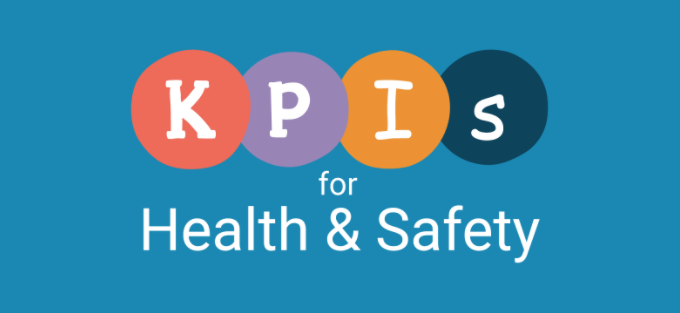Health and Safety KPIs are measurable values used by Health and Safety Teams to track and determine their progress on specific business objectives. These KPIs essentially act as a health and safety performance review.
Indeed, plenty of organizations won’t have even considered creating KPIs for Health and Safety. You might even think that your organization doesn’t really need them, if you work in a ‘low risk’ sector such as IT or marketing. But remember, KPIs for Health & Safety aren’t all about measuring workplace accidents – that only really relates to the ‘Safety metrics’ part. The ‘Health metrics’ part of the equation is just as important, and most certainly applies whether you’re a manufacturer or a marketer!
Examples of KPIs for Health And Safety Teams
Measuring safety in the workplace
Health and Safety KPIs: Number of Reported Accidents & Incidents
This ‘lagging metric’ is a pretty obvious one, but it really gives a high-level benchmark to the organization in terms of knowing if safety is improving or worsening. In addition to monitoring the number of accidents/incidents, you’ll probably also want to convert this number to a ratio per employee – i.e. 0.001 accidents per employee. Keep an extra close eye on this Health & Safety KPI during times of change – new processes, new machines, etc.
Health and Safety KPIs: Lost Time Injury Frequency Rate
This refers to the number of lost time injuries that happen per million hours worked. So a ‘LTIFR’ of 8, would mean that 8 lost time injuries take place every million hours worked. To work out the LTIFR you multiply the number of lost time injuries by 1,000,000 then divide that number by the total number of hours worked in an organization. So if you have 8 lost time injuries and 3 million hours worked, your LTIFR is 2.6.
Health and Safety KPIs: Lost Time Injury Incidence Rate
This measures the events that occur over a standard period of time by a standard number of people. So if we want to calculate the ‘LTIIR’ (Lost Time Injury Incidence Rate) for 1,000 people, we multiply the number of incidents by 100, then divide it by ne number of people. So let’s say we have 3 incidents. 3 x 100 = 300. Divide that by the number of people and we get a LTIIR of 0.3. So for every 100 people, an organization would have a 0.3 LTIs.
Health and Safety KPIs: Equipment Breakdowns
By measuring the number of equipment breakdown and creating a goal to improve this number, you affect both safety and production. Since often when critical equipment breaks down, there is a loss of activity. Most importantly, this is a strong lead indicator that will play a huge role in the reduction of incidents, since a large percentage of incidents happen due to the state of the equipment used.
Examples of Health and Safety KPIs for measuring health in the workplace
Health and Safety KPIs: Employee Perception of Management Commitment
This KPI for Health and Safety is usually measured through regular surveys. These allow an organization to understand if employees feel that what they do on a daily basis and the management objectives are on the same path. People tend to follow procedures and instructions better if they see a connection in what they do and ‘the big picture’. It’s a little like running an NPS for employees.
Health and Safety KPIs: Average Overtime Hours Per Person
This average is a great KPI to help measure the average time worked by someone beyond their normal working hours. The idea is that if you keep this number low, it can mean that an organization is successfully managing workload and reducing the chance of fatigue in the workplace. You do want to be careful with this KPI, as it is not applicable to all types of organizations and the definition of ‘overtime’ will vary per organization.
Health and Safety KPIs: Satisfaction With Environment Score
This is something that would be measured as part of an eNPS survey. It involves obtaining employee feedback on several levels, including how satisfied they are with their physical surroundings (desk, office, noise levels, building, toilets, greenery, etc…), right through to their emotional environment. Low scores might indicate issues with that are adversely affecting the health (physical but more likely mental) of your employees.
Health and Safety KPIs: Fitness Assessments
Offering free health checks in the workplace and monitoring the results can have a positive effect on both the individual and the workplace. If an independent assessor is used, staff will benefit from the reviews, but an organization can have an overall understanding of the health level as a team, and proactively work to change this, introducing programs and improving the physical environment. Measure the success of such programs via KPIs that look at take-up and satisfaction levels.
Examples of Health and Safety KPIs for measuring the efficiency of your health and safety processes
Health and Safety KPIs: Monthly Health and Safety Prevention Costs
This is the expenditure that will be aimed at minimizing health and safety hazards within an organization. It will include training as well as inspections and audits that will be aimed at offering conducive and safe working conditions.
Health and Safety KPIs: Productive Days %
This is a nice twist on the more negative approach of measuring things like sick days and time off work due to accidents. It flips those KPIs into a more positive approach of celebrating the number of days of productive work that were successfully delivered as a percentage of the total available working time. For example, if your organization had 10 employees and there were only 5 days lost due to health and safety issues, your Productive Days % would be 99.86% ((3645 days / 3650 available days) x 100 = 99.86%).
Health and Safety KPIs: % of Management Trained in Health & Safety
This simple leading indicator will help you avoid many of the accidents and incidents that might otherwise occur. It also helps you to understand the effectiveness of your training programs. It’s up to you to define what that health and safety looks like, but once you’ve done that, it’s a simple case of measuring how many managers have undergone it and expressing that as a percentage. You can do the same thing for all employees if you want to.
Health and Safety KPIs: Average Time To Resolution of Risks & Issues
If you’re using a platform your help you manage risks and issues (which in many cases will be directly linked to health and safety incidents), you’ll be able to measure how long it takes you on average to resolve these issues from the time that they’re first reported. For example, if someone reports loose cabling in a certain part of the office – how long did it take for this to be investigated and resolved?
Of course, there are dozens of other KPIs you can use to measure health and safety in a work scenario. But hopefully, this should at least get you started. Here at Cascade, we LOVE KPIs! If you are using one of these KPIs, or perhaps other from different parts of an organization, why not try and load them into Cascade and create yourself a dashboard to track them on? You have FREE access to the software, and there is no credit card required, so there really is no excuse.
by Pat Ordenes






